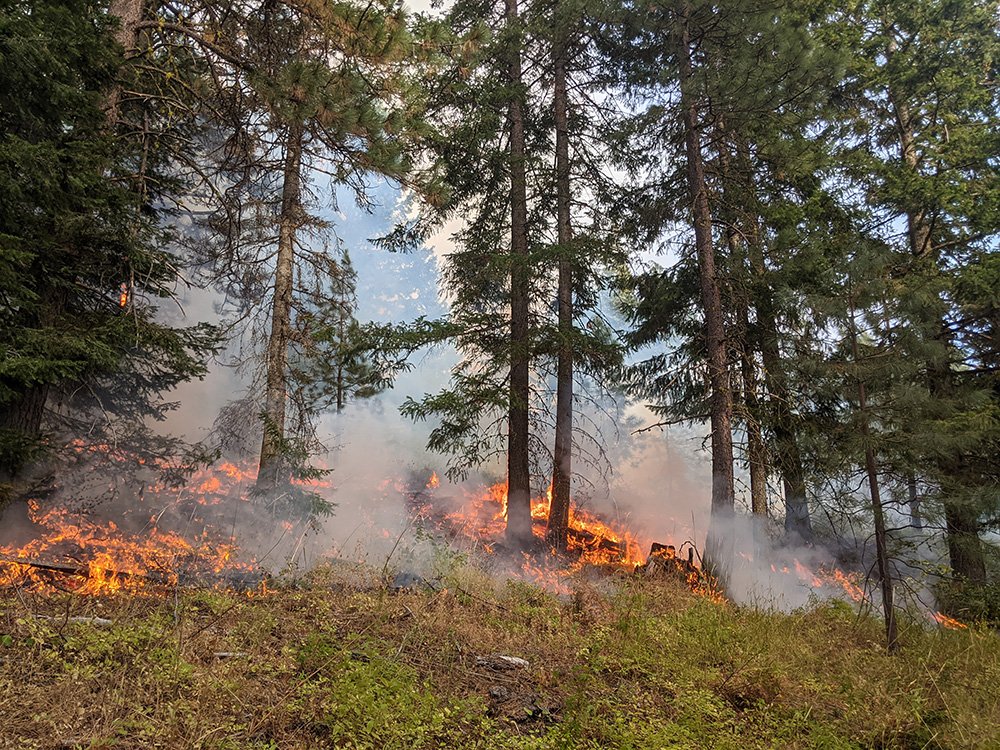October is typically peak prescribed fire season in Washington because rainfall early in the month ends wildfire season and provides the perfect window to conduct controlled, prescribed burns before the rainy season. Due to the unseasonably warm and dry conditions that continued throughout October this year, the window kept getting smaller and smaller.
Following the light rain in mid-October, The Nature Conservancy, Upper Kittitas Fuels Crew, and local partners caught a break and conducted a prescribed burn on Sunday, October 23rd on TNC’s Central Cascades Forest Lands on the Cle Elum Ridge. The burn was part of Central Washington’s prescribed fire Training Exchange (TREX) program, and brought together firefighters from multiple upper Kittitas County Fire Districts, Washington State Department of Natural Resources (DNR), Yakima Training Center, Mount Adams Resource Stewards, and The Nature Conservancy to burn ~40 acres of forestland, adding to 300 acres of prescribed burns that have been conducted near Roslyn since 2017 as a part of TREX.
This illustration shows how burn crews establish a prescribed fire to keep the fire contained, which includes the use of a natural firebreak such as a river, a handline to maintain the fire boundary, and the headfire set with several small ignitions that spreads toward the blackline. Credit: Erica Sloniker/TNC
Prescribed burns play a critical role in the health of Washington’s forests because they evolved with fire, and fire will always be part of the landscape here. During a prescribed burn, fire professionals use low-intensity fires to reduce vegetation, including dense shrubs and saplings, that could otherwise fuel a severe wildfire. This creates a healthier, more resilient forest and helps protect nearby communities from the extreme hazards of wildfires.
In addition to reducing fuels so there are less severe wildfires, prescribed burns also lessen fires' impact on air quality. Since prescribed fires burn at a lower intensity, nearby communities, in this case, Roslyn, can experience some smoke, but it is significantly less harmful than the smoke produced by a wildfire and has only a brief impact on air quality.
Prescribed burns use low-intensity fire to clear overgrown brush and small trees, leaving less fuel and reducing the intensity of wildfires. Credit: Katie Pofahl/TNC
The Nature Conservancy and our community partners are thrilled that we were able to take advantage of this brief window of opportunity and look forward to our next prescribed fire season.
The prescribed burn on Cle Elum Ridge is part of an ongoing project on the ridge designed to protect the communities in the Cle Elum Watershed including Ronald, Roslyn, Cle Elum, South Cle Elum, and Suncadia from catastrophic fire.






















